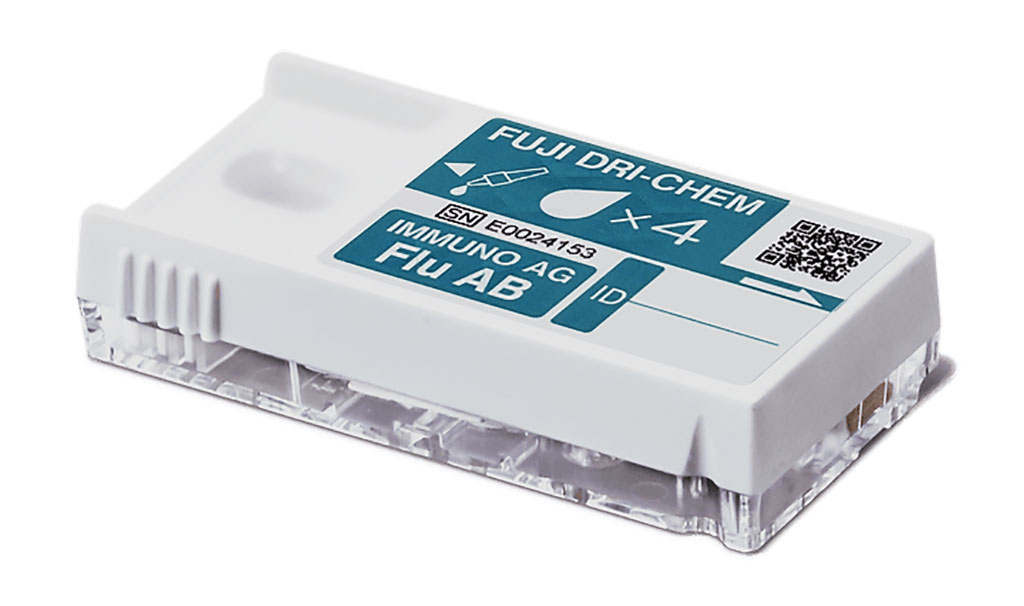High Performance of Rapid Influenza Diagnostic Test Validated
By LabMedica International staff writers
Posted on 19 Dec 2019
Influenza is a leading infectious cause of morbidity and mortality worldwide. Annually, about 5% to 10% of adults and 20% to 30% of children have symptoms of influenza-like illness (ILI), and approximately 650,000 deaths secondary to influenza occur each epidemic season.Posted on 19 Dec 2019
Timely diagnosis and early antiviral therapy are crucial to counteract influenza spread. However, current diagnostic tools such as the real-time polymerase chain reaction (RT-PCR) are expensive and time-consuming. Some rapid influenza diagnostic tests (RIDTs) are also used to rapidly support treatment decision during influenza outbreaks. Nonetheless, RIDTs’ performance varies according to the prevalence of different influenza virus strains and the method used to determine their results.

Image: The Fuji dri-chem immuno AG cartridge FluAB kit (Photo courtesy of Fujifilm Corporation)
A large group of scientists working with the National Institute of Respiratory Diseases (INER, Mexico City, Mexico) enrolled in their study 592 participants, 45.6% males and 54.3% females; their median age was 14 years. From these, 171 subjects (28.9%) received influenza vaccination for the evaluated season: 127 were immunized with the IIV3 and 44 received the IIV4. They enrolled the patients attending to the INER from October 2016 to March 2017.
The team used the Fuji dri-chem immuno AG cartridge FluAB kit (Fujifilm Corporation, Tokyo, Japan) for detection of influenza viruses in fresh respiratory specimens. This test utilizes the immunochromatographic principle of virus detection as other conventional rapid influenza diagnostic tests (RIDTs), adding the silver amplification principle of photographic development to improve its sensitivity. Detection of influenza viruses was assessed by RT-PCR and nucleic acid extraction from the clinical samples was performed with the PureLink Viral RNA/DNA mini kit (Thermo Fisher Scientific, Inc, Waltham MA, USA). The amplification was accomplished using the CFX96 Real Time System Bio-Rad Platform (Bio-Rad Laboratories Inc, Hercules, CA, USA).
The investigators reported that of the enrolled 592 patients. RT-PCR detected 93 cases of influenza A(H1N1)pdm09, 55 of AH3N2, 141 of B, and 13 A/B virus infections. RIDT showed 90.7% sensitivity and 95.7% specificity for influenza A virus detection, and 91.5% sensitivity and 95.3% specificity for influenza B virus detection. Overall vaccines’ effectiveness (VE) was 33.2% against any laboratory-confirmed influenza infection. VE estimates against influenza B were higher for the quadrivalent vaccine. Immunization and occupational exposure were protective factors against influenza.
The authors concluded that the RIDT was useful to detect influenza cases during an outbreak setting. Effectiveness of 2016/17 influenza vaccines administered in Mexico was low, but significant. The study was published in the December, 2019 issue of the International Journal of Infectious Diseases.
Related Links:
National Institute of Respiratory Diseases
Fujifilm Corporation
Thermo Fisher Scientific
Bio-Rad Laboratories













